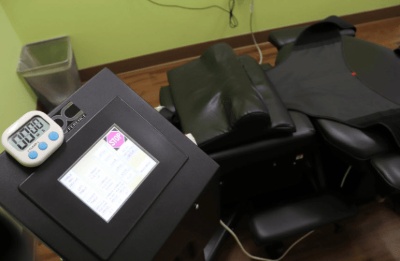Doctors frequently suggest it when other therapies don’t bring relief. It’s particularly beneficial for issues like herniated discs or sciatica. It’s a non-invasive alternative compared to surgery. Spinal decompression therapy is a popular treatment for back pain. It’s non-surgical and works by gently stretching the spine. How long does spinal decompression last? And how many sessions are needed for effective treatment? These are common questions for those considering this therapy. The answers can vary based on individual conditions and treatment plans. In this article, we’ll explore the duration and frequency of spinal decompression. We’ll also discuss factors that can influence the longevity of its results.
Understanding Non Surgical Spinal Decompression Therapy
Spinal decompression therapy aims to relieve pressure on spinal discs. It involves a gentle stretching of the spine to alleviate discomfort. This process can improve blood flow and promote healing of affected areas.
Doctors often recommend it when other treatments fail to provide relief. It’s especially useful for conditions like herniated discs or sciatica. It’s a non-invasive option compared to surgical interventions.
This therapy uses specialized tables or machines. These devices apply controlled traction to the spine. The patient remains fully clothed during the sessions, ensuring comfort throughout.
Many patients appreciate this therapy for its non-surgical nature. However, a proper diagnosis is essential before starting treatment. A healthcare professional can determine if this option suits your specific condition.
Duration of a Single Spinal Decompression Session
A typical spinal decompression session takes between 15 and 45 minutes. This duration ensures an effective treatment while avoiding any strain. It’s sufficient time to work on the spine without causing exhaustion.
During the session, the spine undergoes traction and relaxation cycles. These cycles help in gradually reducing pressure. The intervals are carefully timed for maximum benefit.
Patients can comfortably complete the session while lying on a specialized table. This setup ensures that the therapy remains gentle yet effective. Each session is designed to target specific areas, promoting gradual healing.
Total Number of Sessions for Effective Treatment
The number of spinal decompression sessions can vary widely. Most people require between 15 to 30+ sessions for effective treatment. This range depends on individual conditions.
Several factors influence the total number of required sessions. These include the severity of the back issue and the patient’s overall health. Personal goals and response to therapy also play a role.
- Typical range of sessions
- Factors influencing the number of sessions
A tailored plan is crucial for optimizing outcomes. Regular assessments ensure the treatment stays effective and aligned with the patient’s needs. An individualized approach can facilitate better, long-lasting relief.
Frequency of Sessions
At the start of treatment, sessions are usually scheduled three to five times per week. This frequency helps achieve quicker relief and better initial results.
After the initial phase, the frequency may decrease. Some patients may shift to weekly or biweekly sessions to maintain benefits and manage pain effectively.
Longevity of Spinal Decompression Results
The lasting relief from spinal decompression varies among patients. Many individuals report significant pain reduction for months, or even years.
The longevity of results often depends on the severity of the condition and lifestyle habits. Maintenance sessions and following a healthcare provider’s advice can help sustain benefits.
Engaging in regular physical activity and making ergonomic adjustments at home and work may prolong positive outcomes.
Factors Affecting the Outcome of Spinal Decompression
Several factors influence how well spinal decompression works. The severity of your condition plays a crucial role. More severe issues may require additional sessions for optimal improvement.
Lifestyle and follow-up care are equally important. Patients must stay active and adhere to personalized aftercare plans for sustained relief. A holistic approach often yields better outcomes.
Key aspects include:
- Severity of the condition
- Lifestyle and follow-up care
- Adherence to at-home guidelines
By following professional guidelines and
Including healthy habits, patients can maximize the benefits of spinal decompression therapy.
Enhancing and Maintaining the Benefits of Spinal Decompression
To fully benefit from spinal decompression, patients should consider additional supportive measures. Physical therapy and targeted exercises can significantly enhance treatment outcomes. These activities promote strength and flexibility.
Ergonomic adjustments and lifestyle improvements also support recovery. Simple changes, like using proper seating or maintaining a healthy posture, can have profound effects. These adjustments help prevent relapse.
For long-term success, regular assessments with healthcare providers are vital. They can recommend maintenance sessions if necessary. Key strategies include:
- Physical therapy and exercise
- Ergonomics and lifestyle changes
- Regular assessments and maintenance sessions
These combined efforts ensure sustained relief and support overall spinal health.
Conclusion: Is Spinal Decompression Suitable for You?
Spinal decompression therapy offers potential relief for those struggling with chronic back pain.
However, it may not be appropriate for everyone. Individual medical evaluation is crucial before beginning treatment.
Consulting with a healthcare provider can help determine if this therapy aligns with your specific needs. Factors like your condition’s severity and personal health goals are important to consider.
Informed decisions about your treatment options will lead to better outcomes.
Looking at the benefits and possible drawbacks of spinal decompression can help you choose the best way to take care of your spine.




